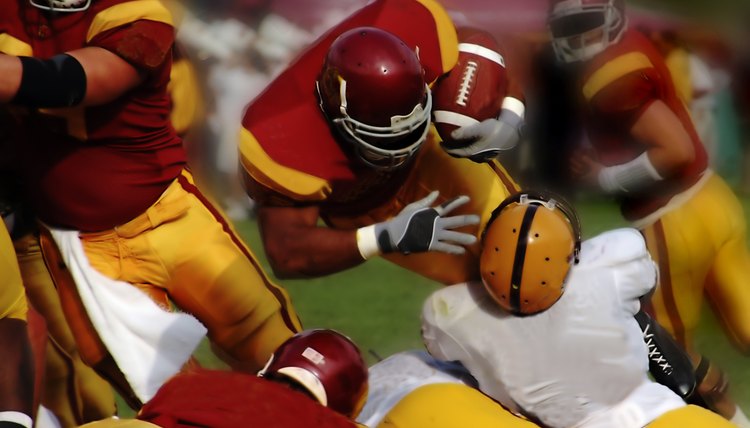What does fact checked mean?
At SportsRec, we strive to deliver objective content that is accurate and up-to-date. Our team periodically reviews articles in order to ensure content quality. The sources cited below consist of evidence from peer-reviewed journals, prominent medical organizations, academic associations, and government data.
- American College of Sports Medicine: Being a Good Sport (Spectator): A Quick Guide for Parents
- American College of Sports Medicine: Being a Good Sport (Spectator): A Quick Guide for Parents
The information contained on this site is for informational purposes only, and should not be used as a substitute for the advice of a professional health care provider. Please check with the appropriate physician regarding health questions and concerns. Although we strive to deliver accurate and up-to-date information, no guarantee to that effect is made.
How to Deal With Being Scared of Being Tackled In Football

Youth football is becoming a very popular sport. In 2010, over 250,000 children participated in Pop Warner youth football programs, and that number continues to grow. While many youth players admire the tackles they see college and professional football players make, they are scared of being tackled during their own games. Overcoming the fear of being tackled can be challenging, but it is possible through preparedness and encouragement.
Equipment
Even the youngest football players are required to wear a helmet and full pads whenever playing tackle football. Spend time teaching your youth player the importance of each piece of equipment. Make sure each piece fits correctly to maximize its benefit. Helping your player to understand the safety equipment will not only keep him safe on the field but will also go a long way in assuring him that he will not be hurt while being tackled.
Technique
Tackling in football requires proper form and technique. Teaching youth players how to correctly block and tackle builds confidence on the football field. Help the player to understand that most injuries occur when not using proper technique. Practice technique repeatedly so it becomes second nature to the player.
Drills
The key to confidence is practice. Start out by practicing drills at half speed using a tackling dummy to ensure the player knows proper the proper form he should use once the drills go live. Once a strong base is established, start doing light contact drills. Gradually speed up drills to game speed and move to full contact as the player becomes more comfortable and confident. Teaching slowly will allow the player to feel more confident in his skills. More confidence leads to less fear on the field.
Focus
Each player should understand his position on the field and the job he needs to get done on every play. Changing the focus from trying to avoid a tackle to completing a task will help the player to move past his fear. Working for a specific goal helps the player to bond with his team and share responsibility for wins and losses.
Positive Reinforcement
As parents and coaches, you can help your player become less fearful of tackles with a lot of encouragement and positive reinforcement. Don't blame players for mistakes or put him down for being hesitant to make big plays. Remind your child why he wanted to play and applaud him for steps in the right direction. With experience, your child will gradually lose his fear and enjoy the game he loves.
References
Writer Bio
Wendy Fryer holds a Master of Science in exercise physiology from the University of Illinois at Urbana-Champaign. She has more than 15 years of experience managing health clubs and working with clients.
